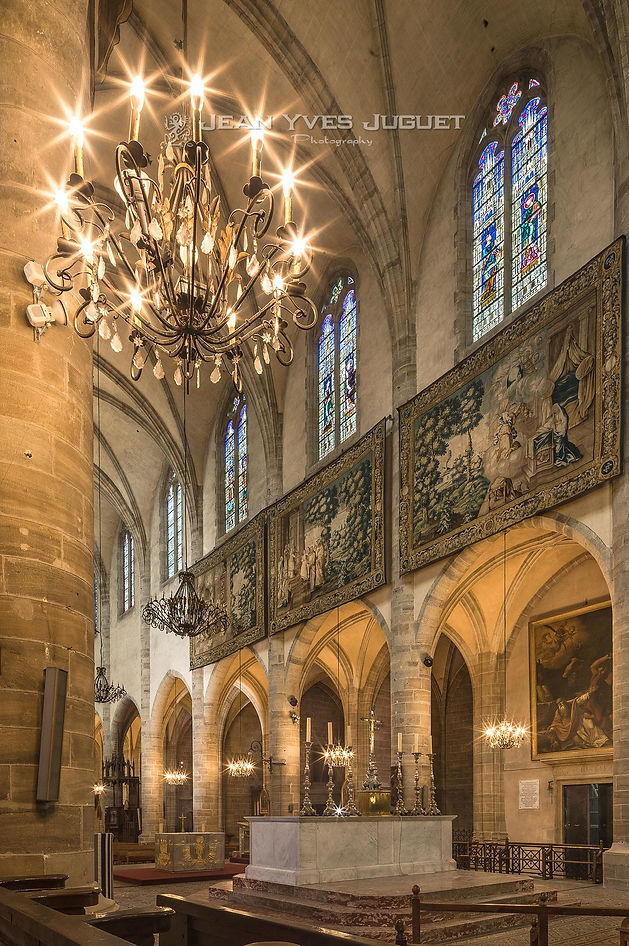Notre-Dame de Mende Cathedral
Notre-Dame et Saint-Privat Cathedral in Mende is the episcopal seat of diocese of Mende . Located in the city center of the prefecture of the Lozère , it has been listed as a historic monument since 1906 . It is the only building fully Gothic of the whole department.
In 1368 Pope Urban V launched the construction of an imposing Gothic cathedral.
This long project ended in 1467, more than a century later!

The cathedral is 67 meters long and 30.30 meters wide. The height of the vaults is 24 meters. The highest point of the whole, the bishop's bell tower, reaches 84 meters high, while that of the chapter rises to 65 meters. The central nave has a width of 12.30 meters, aisles of 4.10 meters separating it from the rectangular chapels. These are 4.90 meters wide.
Here, the architecture is discreet, it is a setting for exceptional furniture: 12th century Virgin, 14th century portrait of an Urban, 17th century organ and stalls, Aubusson tapestry from 1708 ...
Aubusson tapestries

The town of Aubusson, located in the Creuse (Limousin region), is world famous for the tapestries which, since the 15th century, have been woven in its workshops. The presence of tapestries in the cathedral of Mende reminds us that the monks, installed in the stalls for long hours, had to protect themselves from drafts and cold. The eight Aubusson tapestries (3.40 m by 5 m), made of wool and silk, which have been decorating the nave since 1708, were offered by Monsignor François Placide Baudry de Piencourt, bishop of Mende from 1706 to 1707, as The inscription of his name and his coat of arms attest to this.

These tapestries retrace the life of the Virgin Mary: birth, presentation of the Virgin in the Temple, Annunciation, Visitation, birth of Jesus in Bethlehem and adoration of the shepherds, adoration of the Magi, presentation of Jesus in the Temple.


The organ of the cathedral

In 1653, Monsignor Sylvestre Cruzy de Marcillac (1628-1659) ordered new organs from the factor André Eustache of Marseille. The Renaissance-style sideboard of the great organs, similar to that of Nîmes and Draguignan, designed by Jean Tiran and produced by Christophe Noiratte and Antoine Cabizel, on a stone platform established by the mason Jean Delhort and the carpenter Guillaume Julien, s' harmonizes well with the Gothic sobriety of the stone. The organ was restored from 1824 to 1828. In 1840, the case was classified as building then in 1906, when the cathedral became a historical monument, it was classified as an object.

the current building stands on the site of a Romanesque church which itself replaced an older church mentioned in 951. Work began in 1369. The shell was completed in 1466.
In 1487, the nave was extended by two bays. In 1508, a new bell tower was erected.
In 1512, the second bell tower was completed.
In 1581, the Protestant leader Merle damaged the building (destruction of the large piles of the building, causing the collapse of the central vessel, side aisles and most of the southern chapels).
The new cathedral was consecrated in 1620.







